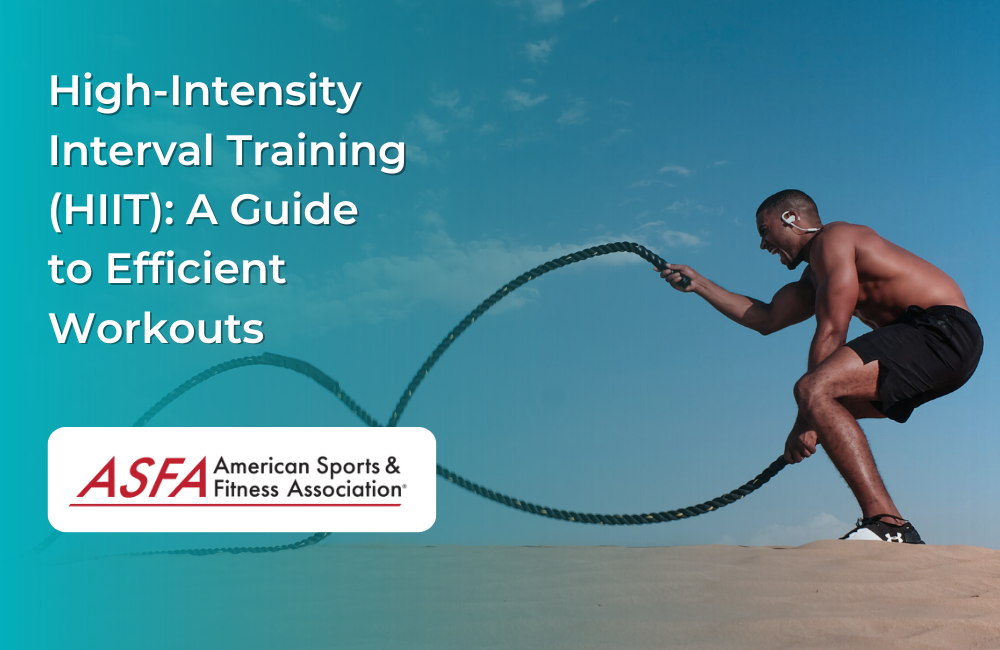High-Intensity Interval Training (HIIT) is a popular and effective workout technique that involves short bursts of intense exercise followed by brief periods of rest or lower-intensity activity. HIIT workouts are known for their efficiency in burning calories, improving cardiovascular fitness, and building strength. In this article, we'll delve into the principles of HIIT, its benefits, and how to incorporate it into your fitness routine.
Key Principles of HIIT:
- High Intensity: The "high-intensity" in HIIT refers to the effort level during the work intervals. These intervals typically involve exercises or activities performed at or near your maximum effort.
- Short Durations: HIIT workouts are characterized by short work intervals, typically ranging from 20 seconds to 1-2 minutes. These are followed by equally short rest or recovery periods.
- Repeated Cycles: HIIT sessions consist of multiple cycles or rounds of work and rest intervals. The number of cycles can vary based on your fitness level and the specific workout.
- Variety: HIIT can be adapted to various exercises and activities, making it versatile and suitable for different fitness goals and preferences.
Benefits of HIIT:
- Efficient Fat Burning: HIIT workouts can help burn a significant number of calories in a short time, making them an efficient choice for weight management and fat loss.
- Improved Cardiovascular Fitness: HIIT enhances cardiovascular health by improving aerobic capacity, lowering resting heart rate, and increasing the efficiency of the heart's pumping action.
- Time-Efficiency: HIIT sessions are typically shorter than traditional steady-state cardio workouts, making them ideal for individuals with busy schedules.
- Muscle Preservation: HIIT can help preserve lean muscle mass while promoting fat loss, which is essential for maintaining a healthy metabolism.
- Metabolic Boost: HIIT can elevate your metabolism, leading to an increase in calorie burning even after the workout is complete—a phenomenon known as excess post-exercise oxygen consumption (EPOC).
- Variety and Fun: HIIT workouts can be adapted to various exercises, such as sprints, bodyweight exercises, cycling, or even dance. This variety keeps workouts engaging and enjoyable.
Sample HIIT Workout:
Here's a simple HIIT workout to give you an idea of how it's structured:
Warm-up (5-10 minutes): Light cardio or dynamic stretching to prepare your body for exercise.
Work Interval (30 seconds): Perform exercises like high knees, burpees, or jump squats at maximum intensity.
Rest Interval (15 seconds): Active rest, such as marching in place or walking, to catch your breath.
Repeat: Complete the work and rest intervals for a total of 4 rounds.
Cool-down (5-10 minutes): Gentle stretching and deep breathing to aid recovery.
Safety Considerations:
While HIIT offers numerous benefits, it's essential to keep the following safety tips in mind:
- Consult a Healthcare Professional: If you're new to exercise or have underlying health concerns, consult with a healthcare professional before starting HIIT.
- Proper Form: Maintain proper exercise form to prevent injuries. If you're unsure about your technique, consider working with a fitness professional.
- Progress Gradually: Start with shorter work and rest intervals and gradually increase intensity and duration as your fitness improves.
- Listen to Your Body: Pay attention to how your body responds during HIIT. If you experience pain or discomfort, stop and seek guidance.
- Recovery: Allow adequate time for recovery between HIIT sessions to prevent overtraining and burnout.
High-Intensity Interval Training is a versatile and effective workout method suitable for individuals of various fitness levels. Incorporating HIIT into your fitness routine can help you achieve your goals efficiently, whether you're looking to burn fat, improve cardiovascular fitness, or enhance overall strength and endurance.





